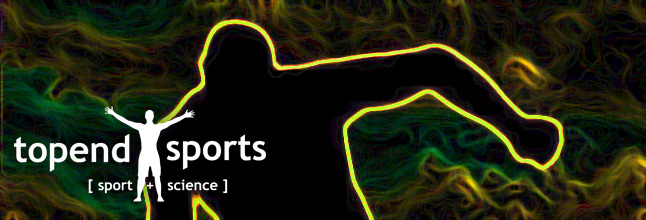Here is one of the archived newsletters from Topend Sports. Sign up to receive the latest sports and science news direct to your email inbox. See more archived newsletters.
Topend Sports Newsletter: March 20, 2019

In recent years, there has been a transformation in the way we play and watch sport due to an explosion in scientific and technological advances in materials, training, nutrition, and medicine.
Examples of innovations in sport include aerodynamic swimming suits and racing bicycle design, energy conserving athletic shoes, diet and drugs for performance-enhancement, and video replays and ball tracking.
With sports changing so much, it is inevitable that there will be significant advances in the field of fitness testing for sports, though it appears to be lagging behind.
Nowadays the majority of fitness tests used are not very different from 10 or 20 years ago. We still commonly use the Illinois agility test, Cooper 12-minute run, sit and reach flexibility and simple push-up and sit-up tests.
A new test incorporating the latest technologies may be more accurate and easier to collect data and monitor changes, but sports scientists will be hesitant to use it without the research results, years of experience performing the test and an extensive database of results and norms. A new test has to be much better than what it is replacing before it becomes widely used.
Already there is wearable technology, such as smartwatches, which are transforming the fitness industry, providing a wealth of information about the body’s response to exercise, and it is only a matter of time before these innovations become more widespread in helping collect fitness testing data.
This currently available technology can be utilized to supplement current test protocols. The technology can help minimize measurement error, reducing the need for trained assessors, enable you to test larger groups at once, and even some athletes could accurately test themselves remotely.
A good example of this is the vertical jump test. The test is essentially the same as has been used for over 50 years, but as new technologies have become available the methods of measurement have changed. Instead of just placing a mark on the wall, jump height can be more accurately measured using lasers or timing mats, and extra information about the force/velocity curve can be gained by jumping from a force plate.
We have the technology to measure parameters such as heart rate, body temperature, sweat rates and movement speed, and monitor fatigue and recovery. They can be used to continuously monitor the athlete's physiological responses, using GPS to accurately measure the running distance, wear trackers to accurately time how long to complete a test, and sensors to count the number of repetitions.
In the future, who knows what else can be done with technology yet to be invented?
Here are just some possible examples:
- A blood or DNA tests to create an accurate physiological profile (an emerging technology)
- Sensors in implements for recording force/velocity profiles, work output, actual distance thrown (e.g. medicine ball throw).
- Real-time tracking of movement speed - onboard sensors could measure the instantaneous speed at any time (e.g. sprint tests).
- Movement sensors for counting repetitions and checking for correct technique (e.g. push-up test)
- Virtual reality for measuring agility and reaction time, placing the athlete in an actual but controlled game situation (e.g. reaction time tests).
- In-muscle sensors to record the use of aerobic and anaerobic energy systems directly, and measure the composition of muscle fibre types (e.g. anaerobic tests).
- Wearable sensors which measure small movements in all directions, to enable accurate range-of-movement measurements of joints (e.g. flexibility tests).
- A simple scanner, providing an easy, cheap and accurate method of measuring body fat levels (e.g. body composition tests).
Who knows what else? Keep reading Topend Sports for all the latest fitness testing information, we'll keep you up to date.
|
||||||
Related Pages
- More about the future of fitness testing
- Sign up for the latest newsletters
- See more archived newsletters
- The Future of Shoe Design
- Fitness Testing future trends


 Current Events
Current Events